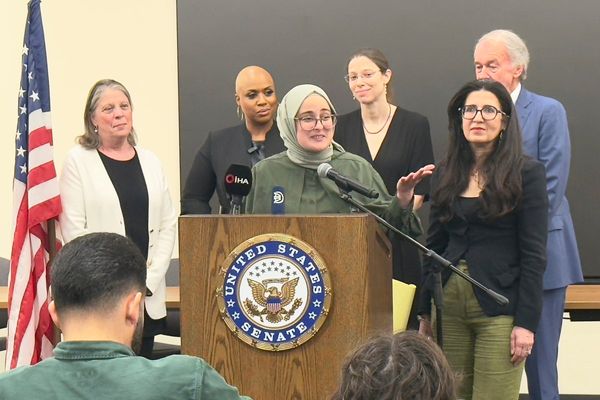
A son of Vietnamese farmers who made a breakthrough as a scholarship student in Australia has released a scientific finding which could help protect a tenth of crops worldwide from disease.
Dr Hoan Dinh, AusAID scholar and PhD student at the University of Sydney, found and defined the sequence of a gene responsible for leaf rust resistance in barley.
The finding, which was published in the journal Nature Communications last month, will help protect cereal crops such as wheat and barley against fungal rust – a disease that decreases global food production by at least 10%.
Dinh, now doing postdoctoral research in Japan, told Guardian Australia he isolated the single gene from a genome of 5 million base pairs.
But Dinh is no stranger to painstaking processes. He said the main difference between Australian and Vietnamese agriculture is that in his country of birth, most work is done manually by hand, whereas in Australia more work is carried out by machines.
Dinh said witnessing the difficulties farmers faced in the field when he was growing up on his parents’ rice and vegetable farm in rural Vietnam inspired him to study agriculture.
Dinh’s PhD supervisor, Prof Robert Park, who is the Judith and David Coffey chair of sustainable agriculture and director of cereal rust research at the University of Sydney, said his student’s “painstaking” work has paid off, discovering a new class of resistance gene in plants generally.
Dinh said: “When I first found the gene, I was worried I had done something wrong because it was so unusual. The majority of disease resistance genes belong to a different gene family.”
Lee Hickey, an associate professor and the principal research fellow at the University of Queensland’s Centre for Crop Science, said: “it’s quite surprising what they’ve found, and it really shows our limited understanding of resistance genes and which ones are actually going to be durable against these rust pathogens.”
But isolating the gene was only the beginning – Dinh’s research subsequently set out “to know how the gene works to help the plants become stronger. And that’s when the story [gets] very interesting.”
According to Park, 28 rust resistance genes in barley have been identified worldwide to date, but only four of these have been isolated, three by the University of Sydney’s Plant Breeding Institute (Dinh’s finding being the third).
The gene that Dinh isolated was known and previously used in Australia to protect barley crops against leaf rust, but was overcome by a new strain of the leaf rust pathogen in 2009 – which Park likens to Covid-19 vaccination resistance changing in the face of new variants like Delta and Omicron.
Park said: “Even though the rust fungus had defeated the resistance gene, we wanted to understand how the gene worked, to see if it could be deployed with other genes, or even if its sequence could be altered to be made effective again.
“You can see already that the work has a direct application to agriculture. This came about as a problem that emerged in agriculture in Australia.”
The significance goes beyond barley as a single crop and provides better insights into how plants defend themselves from pathogens, Park said.
The defence against pathogens, he said, is “really, really important, because these pathogens globally reduce food supply from plant production very significantly … we’re talking 20-25%, there have been estimates made, that we lose every year due to pathogens and pests.”
Brett Hosking, a barley farmer and the chair of Grain Growers Australia, said it’s not unusual for farmers to lose a portion of their crop each year to rust diseases, most often when the grass is thick, coming out of winter and heading into spring.
Rust in wheat and barley costs Australian farmers $350m each year in lost production and fungicides.
The other option to prevent rust disease is to spray crops with chemicals, which Park says is not only an environmental problem but also adds to the cost of production, which is passed on to the consumer.
Worldwide, about 70% of the barley crop is used as animal fodder, while the remainder is used in brewing and food production, and chemicals used in treating rust could be passed up the food chain.
Park said genetics was the cleaner, greener way of controlling pathogens, and the university’s work can take effect thanks to connections with industry.
The institute works with all of the major barley breeding companies in Australia before they release their varieties and suggest what breeds they sell to farmers will prove more resistant.
Hickey said the insight would help researchers better develop varieties with longer-lasting rust resistance, which in turn would help increase agricultural productivity.
“We’ve got some pretty big challenges in the face of climate change, and rapidly evolving pests and pathogens. We’re also under increasing pressure to improve the sustainability of agricultural systems as well.”
Park said the war in Ukraine is also disrupting the supply chain which will cause “a huge disruption of wheat production. There’s going to be a huge knock-on effect around the world.”
• This article was amended on 8 June 2022 to make clear that Dr Hoan Dinh is now working as a researcher in Japan. An earlier version said he was still a student in Australia.







